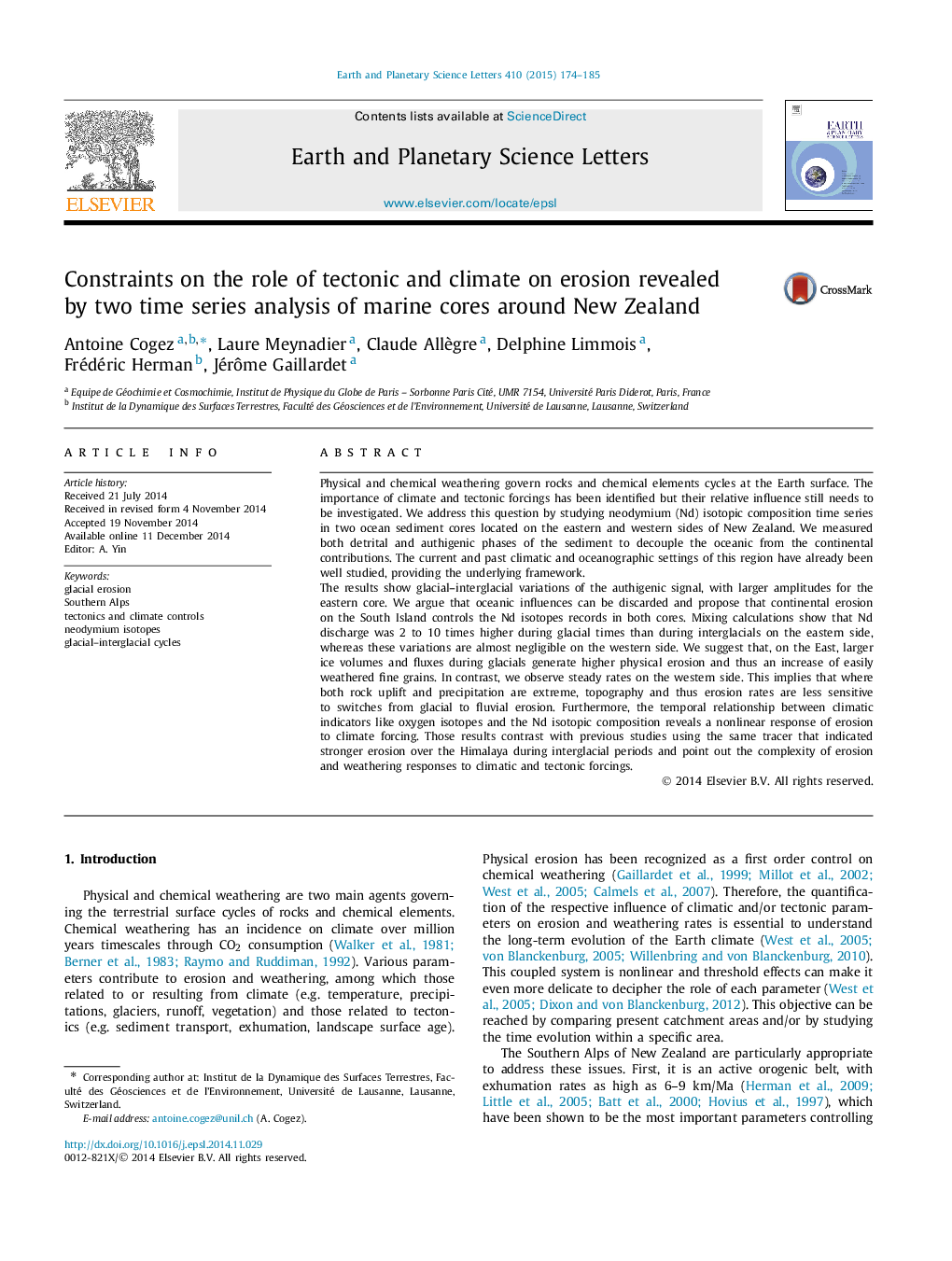| کد مقاله | کد نشریه | سال انتشار | مقاله انگلیسی | نسخه تمام متن |
|---|---|---|---|---|
| 6428466 | 1634746 | 2015 | 12 صفحه PDF | دانلود رایگان |
- Erosion rates increased by a factor of 2 to 10 during glacial times east of the SANZ.
- Glaciers drive large erosion rates during glacial periods.
- High precipitation and uplift keep large erosion rate on the west after deglaciations.
- The relief is in equilibrium on the western side of the SANZ on 10-100 ka timescales.
- A threshold in the response of erosion to climate during cooling phases is observed.
Physical and chemical weathering govern rocks and chemical elements cycles at the Earth surface. The importance of climate and tectonic forcings has been identified but their relative influence still needs to be investigated. We address this question by studying neodymium (Nd) isotopic composition time series in two ocean sediment cores located on the eastern and western sides of New Zealand. We measured both detrital and authigenic phases of the sediment to decouple the oceanic from the continental contributions. The current and past climatic and oceanographic settings of this region have already been well studied, providing the underlying framework.The results show glacial-interglacial variations of the authigenic signal, with larger amplitudes for the eastern core. We argue that oceanic influences can be discarded and propose that continental erosion on the South Island controls the Nd isotopes records in both cores. Mixing calculations show that Nd discharge was 2 to 10 times higher during glacial times than during interglacials on the eastern side, whereas these variations are almost negligible on the western side. We suggest that, on the East, larger ice volumes and fluxes during glacials generate higher physical erosion and thus an increase of easily weathered fine grains. In contrast, we observe steady rates on the western side. This implies that where both rock uplift and precipitation are extreme, topography and thus erosion rates are less sensitive to switches from glacial to fluvial erosion. Furthermore, the temporal relationship between climatic indicators like oxygen isotopes and the Nd isotopic composition reveals a nonlinear response of erosion to climate forcing. Those results contrast with previous studies using the same tracer that indicated stronger erosion over the Himalaya during interglacial periods and point out the complexity of erosion and weathering responses to climatic and tectonic forcings.
Journal: Earth and Planetary Science Letters - Volume 410, 15 January 2015, Pages 174-185
